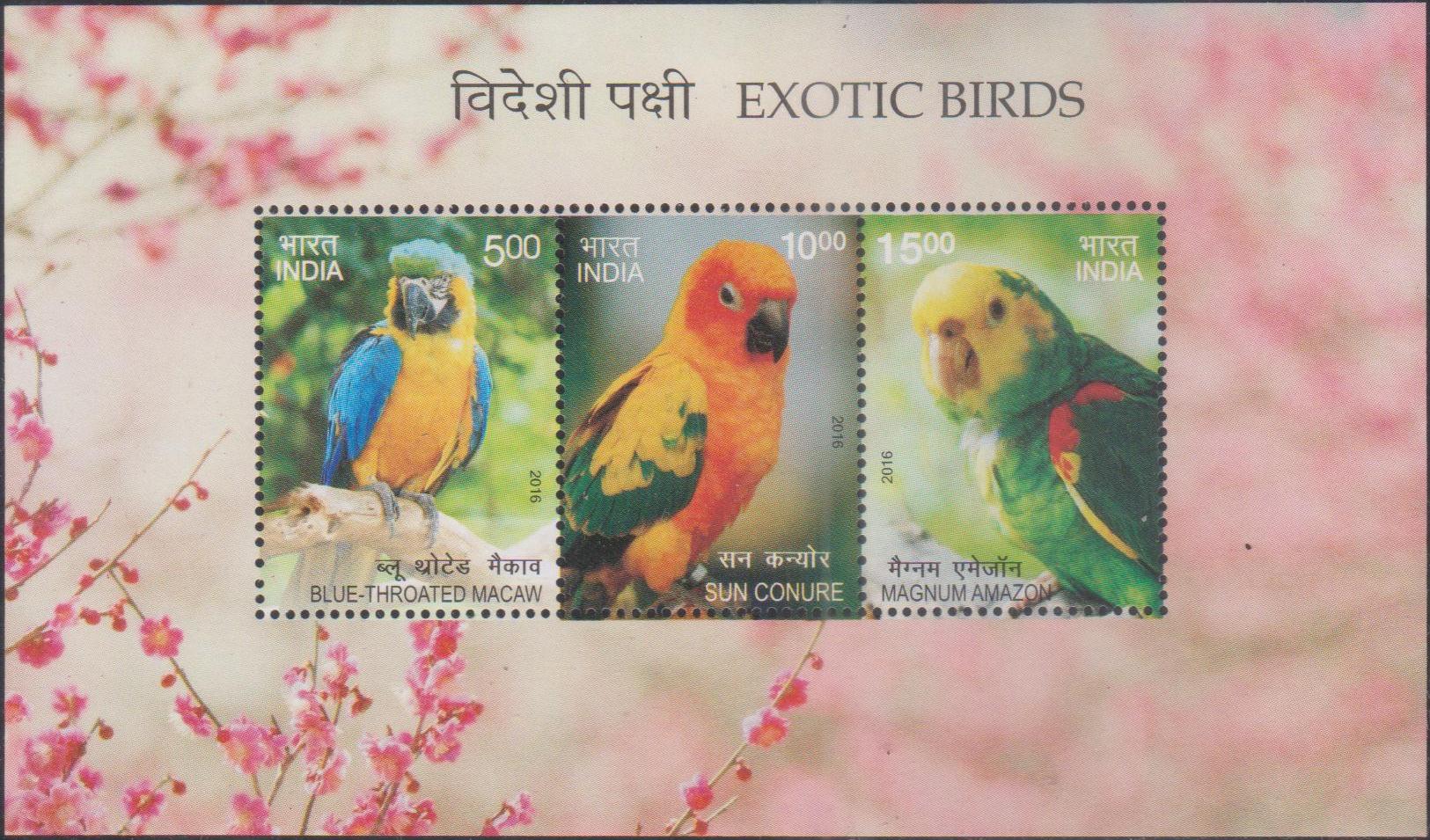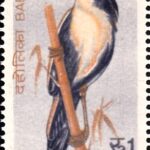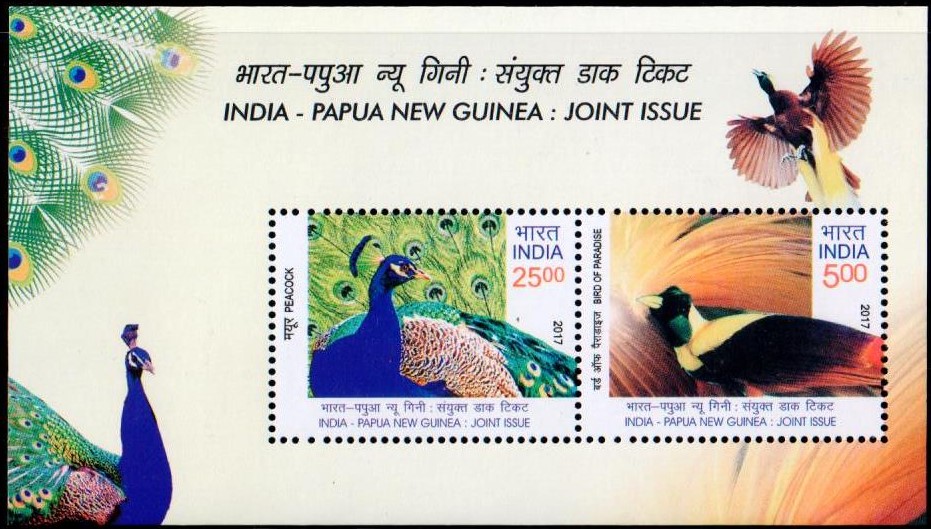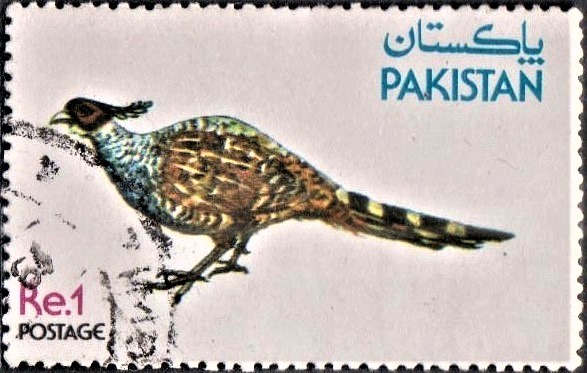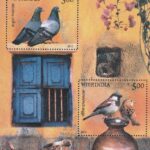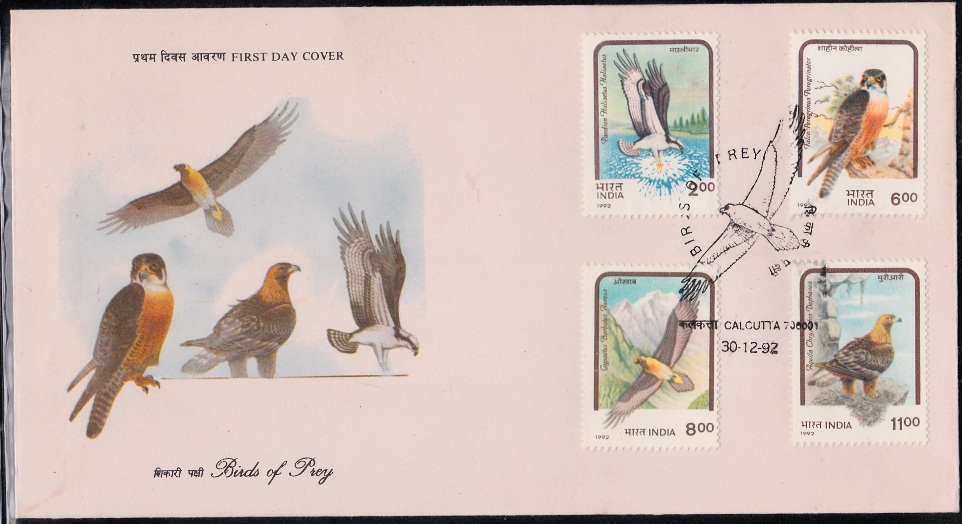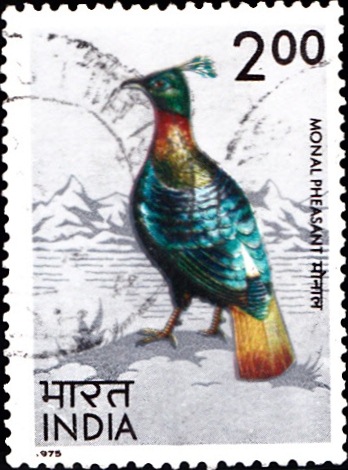
Indian Birds 1975
Complete Set of 4 nos of special postage stamps on the Birds of India : Indian pitta, Black-headed oriole, Western tragopan and Himalayan monal :
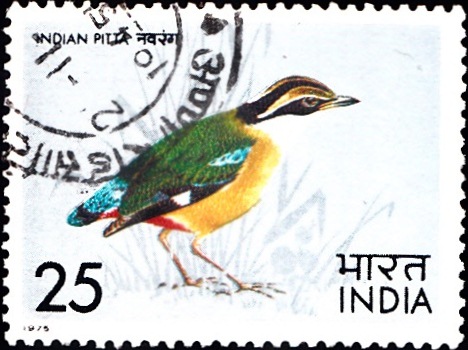
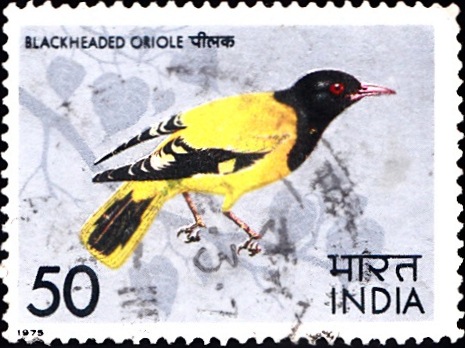
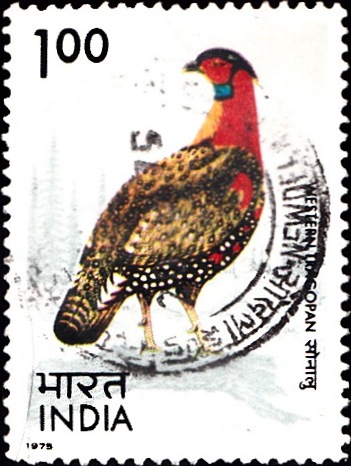

Issued by India
Issued on Apr 28, 1975
Issued for : India is endowed with a rich variety of birds known for their forms and colour, the vivacity of their movements and the sweetness of their songs. This vast sub-continent with its diverse climatic conditions and physical features affords suitable living conditions to a wide variety of feathered inhabitants. The four postage stamps brought out on Indian Birds in 1968 were greatly appreciated both in India and abroad. The Posts and Telegraphs Department are happy to bring out another series of four stamps on Indian Birds.
Designed by : Shri J.P. Irani
Type : Stamps, Postal Used
Colour : Multi-colour
Denomination : 25 & 50 Paise, 1 Re. and 2 Rs.
Overall Size : 3.91 x 2.90 cms.
Printing Size : 3.56 x 2.54 cms.
Perforation : 13 x 13
Watermark : Printed on unwatermarked adhesive Coated paper
Number printed :
25 P : 5 Million
50 P : 3 Million
Re. 1/- : 2 Million
Rs. 2/- : 2 Million
Number per issue sheet : 35
Printing process : Multicolour Gravure Process
Printed at : India Security Press
About :
- Indian Pitta
(Pitta brachyura)- This is a brightly coloured thrush-like passerine bird with a stumpy tail. Found throughout peninsular India largely as a resident, it is also given to considerable seasonal local migrations. The male and the female are alike. It lives mostly on the ground, hopping about the shrubbery and rummaging amidst fallen leaves. It has a loud clear double whistle heard mostly in the early morning and late evening.
- Blackheaded Oriole
(Oriolus Xanthornus)- This is a brilliant golden yellow and black bird of about the size of a thrush. The male and the female are more or less alike but in the female the upper plumage is tinged with greenish colour. Found practically throughout India, the oriole frequents open forest, groves of trees around villages, vegetation and even well-wooded urban gardens. The birds make a charming scene as they move about in the green foliage or dart from one tree to another, the brilliant plumage flashing gold in the sun. It is usually silent in winter, but its mellow fluty calls are increasingly on the air with the advance of warm weather which is the nesting season. Its food consists chiefly of fruits, insects and nectar of flowers.
- Western Tragopan
(Tragopan melanocephalus)- It is one of the most colourful of the four species of tragopan or Horned Pheasant that inhabits the Himalayas at altitudes ranging from 1300 metres in winter to 3500 metres in summer. The brilliantly plumaged cock tragopans have two long brightly coloured fleshy horns one above each side, which are erected during courtship. A brightly coloured wattle or ‘bib’ of naked skin adorns its throat and is also expanded at the same time. The specie depicted here is distinguished from the other three by its white-spotted black underparts. The hen is a soberly clad brown bird with white streaks in her upper plumage. Tragopans are highly prized by sportsmen and hunting and trapping has reduced their numbers to the verge of extinction in some areas. Therefore, all tragopan species have now been officially placed on the list of endangered species in India and are totally protected by law.
- Monal Pheasant
(Lophophorus impejamus)- The male, though rather heavily built and dumpy, is distinguished by his highly refulgent metallic black plumage. This makes the Monal one of the most spectacular pheasants. In marked contrast, the hen is a plain-looking mottled brown bird with a short tuft on the head and white throat. This pheasant is found throughout the Himalayan ranges at altitudes of 500 to 2500 metres. He has powerful legs and stout curved bills with which it digs vigorously for its food of roots and tubers, often in deep snow. The male has a wild ringing whistling call. As with the Tragopan, trapping has depleted its numbers in many of its habitats to an alarming extent, and the bird is now strictly protected by the game laws of most Himalayan States.


